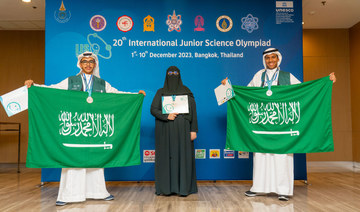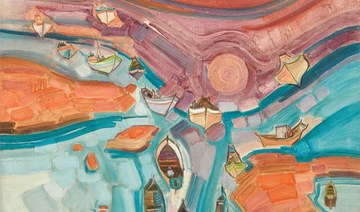I am standing in the Saatchi Gallery, London, and laughing out loud. Around me are other people who cannot help but laugh. This might not be the behavior you expect in a prestigious art gallery but then the work on view is really quite out of the ordinary. It is a video made by the New York-based Moroccan artist Meriem Bennani featuring two episodes of “Fardaous Funjab,” her fake reality TV show centered on a fictitious hijab designer, Fardaous, and her absurd headpieces.
The whole premise is hilarious; the vanity of the designer and her customer — a gullible and spoilt ambassador’s wife. Both need each other to further their ambitions; the designer to raise her profile, attract more prestigious clients and build her business, and the hapless client as a lady who must at all costs outshine everyone else even it means going well beyond sensible boundaries.
Fardaous, the designer, is fawning in her flattery of her client, and the client vain to the point of not being able to see how crazy she looks in the ridiculous headpiece that at the push of a button can rise to a towering crescent — from normal to four times its height.
When she is being measured for her hijab, Fardaous suggests adding a bit of padding to the bust and backside to make her more alluring beneath the flowing garment. This is a really funny cross-cultural moment because many women in tight, figure hugging western dresses are resorting to the same ploys for the same reason.
Fardaous takes over-the-top pride in showing off her beautiful house and pool which she has bought with the proceeds of her successful business. She is shown relaxing by her pool covered completely and asks ‘So you think we Arab women do not sunbathe?’
She is endearing and comic and it is this gentle approach that makes it possible to share the joke and recognize the human failings that happen when fashion is taken to extremes no matter what the cultural context.
Another quite mesmerizing work is the video made by artist Riffy Ahmed who co-curated the exhibition. Ahmed, who studied Fine Art: New Media at Central St Martins and Chelsea School of Art, is keen to challenge the way that women from MENA cultures have been depicted in the Orientalist tradition.
Her black and white film in the style of an old movie, depicts herself reclining on a divan; an exotic creature who gazes out at us in a pose that is both haughty, sensual and mysterious. At that moment, with that gaze, she embodies the exotic ideal that is so often seen in Orientalist depictions of women. Then, suddenly, she breaks the pose, gives a deep, bored sigh and slumps back on the cushions; in an instant the whole image of the alluring siren is shattered. We see an ordinary women, flicking through a magazine, munching sweets and quite clearly a person very far removed from the fantastic vision that the artist was trying to frame.
Ahmed, who was born in Manchester to Bahraini/Bangladeshi parents said that she is constantly questioning the stereotypes that place women in fixed frameworks.
Speaking of her video she said: “In those orientalist photos — that gaze was created by the French - they exoticised the woman through these poses. We keep seeing those images but it does not mean it was the actuality.”
She explained that the idea of the Arab-b-less exhibition was to examine how women of Arab backgrounds manage to make sense of their cultural heritage while living outside of Arab lands. What were the blessings and the drawbacks? What was gained and what was lost?
She said that she wanted to show not the historic frameworks but the real, living contemporary experience: “I am changing it by showing that I am bored with the framing and I want to make it something new.”
The exhibitions co-curator, Sarah El-Hamed, said of the vision behind the concept: “Ara-b-less? is the idea of it being a blessing because it is something beautiful and diverse that we should share, and at the same time you have to question yourself all the time about who exactly you are and how much you are part of one side or the other.
“Everyone you see in this exhibition, including the curators and the producers, has a sense of belonging to a culture that we don’t live in — because we are third generation kids. We live in the Western world so we are not that linked to our parents and grandparents culture, but at the same time it is deeply engraved in us so in our daily lives we have to struggle.”
El-Hamed’s video performance ‘Mots pour maux’ shows a woman during a ritual which she explained drew on Berber traditions. El Hamed is inspired by her cultural roots and influences: “I am Algerian on my mother’s side and my stepfather is Syrian/ Lebanese. I have grown up with these three cultures in my background. After the Algerian civil war in the 90s I moved to France and then to the US. Home is Paris.”
She said of her culture: “Berber women were never victims. We have Berber queens that led wars; they are powerful women and often were there to make decisions in the village.”
Of the woman in the video she said: “She is a sorceress — she is looking for her powers. The man can assist her but he does not put shade on what she is doing — he is just there to assist her — he is not threatening her and she is not threatening him. He is there to assist her in the ritual she is going through.”
She reflected that women need to find the space to connect with their deepest feelings and intuition: “I feel that with regard to intuition and feelings of that sort — in our western world where everything is very fast, we don’t hold on to these signs. Sometimes we go past them and don’t see how important they can be to our balance. Trying to see how things were done in generations before us, we can stop and take the time to unfold signs in our life and thus find our balance.”
Arab News was delighted to catch up again this year with Saudi artist Wejdan Reda who curated the installation ‘Exclusion’ featuring works by Saudi artists Arwa Al-Neami, Sarah Attar, Meaad Hanafi and Wa’ad Al Mujalli. ‘Exclusion’ was featured in a University of Westminster exhibition featuring the work of its art graduates earlier this year. Reda is now planning to study for an MA and is considering offers from such prestigious institutes as the Royal College of Art and Goldsmiths.
The ‘Exclusion’ installation housing the artists’ work takes the form of a purpose built structure referencing traditional housing in the Hejaz region. The public and private faces of women and their place in society are explored in highly creative ways.
Reda said that she was delighted that that the artwork had been included in the Saatchi exhibition.
“The curators of the event were very generous to give me this opportunity to participate, as Saatchi Gallery is known as one of the top galleries in the world. I was so happy to get this opportunity and for them to believe in me, especially as I have only just graduated from university,” she commented.
She is currently back in Jeddah preparing for the next stage of her art education; she plans to study for an MA in Curating for Contemporary Art.
“At this stage I am trying to acquire the funding necessary to complete my education. I am undertaking independent curating work and planning my next exhibition over the next few months. I am also seeking other opportunities to work either as a curator or assistant curator in Saudi,” she explained.
A highly provocative work was presented by Palestinian artist, Shadi Alzaqzouk. In the gallery a white woman knelt on a patch of soil. She knelt in front of an artwork showing the same image of a Muslim woman kneeling on a patch of earth before a defaced Arc de Triomphe in Paris. She is surrounded by rabbits which he said were a reference to how some people sneered at Muslims in France for ‘breeding like rabbits’. She wears a row of horns planted on her headscarf to make her like an alien. He said he hated the way Muslims were regarded in Paris and admitted that he was very angry about his mother being refused a visa to visit him from Gaza last year.
His anger he says makes him provocative and through his animated conversation you could sense that his feelings are strong and personal. He was born in Benghazi in 1981 and spent his early years as a refugee in Libya. In 1996 with the signing of the Oslo Accords he and his family along with 30,000 Palestinians were expelled from the country and returned to Gaza. Since 2007, he has lived and worked in Paris. Alzaqzouq’s work recently featured as part of Banksy’s ‘Dismaland’, Weston-Super-Mare – a glum take on Disneyland.
Ara-b-less is part of the Nour Festival of Art which celebrates contemporary arts and culture from the MENA region. Roya Arab, Nour Steering Committee member, commented: “What is excellent about this exhibition is that it brings together youth, art and the Arab world.”
• [email protected]
Saudi artists interpret Arab culture
Saudi artists interpret Arab culture
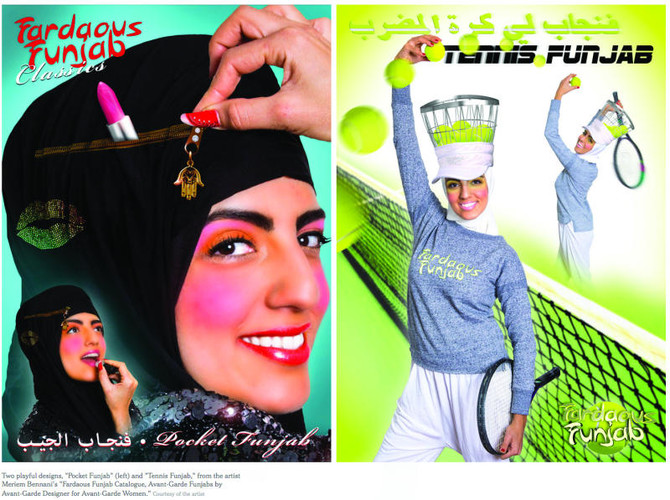
DJ Peggy Gou makes waves in the Middle East, eyes collaborations with Arab artists

ABU DHABI: South Korean DJ and singer Peggy Gou is no stranger to the Middle East. She wowed fans this week at the Louvre Abu Dhabi in the UAE, performing in celebration of the newly opened exhibition “From Kalila wa Dimna to La Fontaine: Travelling through Fables,” and revealed that she would consider collaborating with Arab artists.
She told Arab News the morning after the event: “I woke up this morning and was thinking what happened last night. It is one of those events that is so meaningful. I’ve been to Abu Dhabi twice just to see the exhibitions. It’s more than a museum to me. It is a community, where people even go to hang out. That’s how beautiful that place is.”
Gou was among the first performers to take the stage at the Louvre Abu Dhabi in front of an audience, she said.
“I know David Guetta did it once before without an audience during COVID-19 … It was my first time playing in Abu Dhabi. It was insane. It was a very, very special night, and I want to do more,” she added.
Gou incorporates Arab-inspired music into her performances, noting that “people just love it, and they love percussion.”
To the artist, music is like a feeling. “It is really hard to rationalize it,” she said. “When you love it, you just love it,” she added, expressing her admiration for Arab melodies.
“This is maybe the reason why people support my music, even though they don’t understand the language. Sometimes they just feel it, they just love it,” she explained.
“I love our music, but at the same time, I’m considering collaborating with an Arab artist because there are a lot of talented Arab musicians here,” she said. “I have many friends here who recommended me some artists, and I want to check it out.
“I never say no. I love making music with different languages.”
Gou has performed in Saudi Arabia multiple times.
“Every time I go there, it’s different. But what I can say is it’s always changing in a good way. In the very beginning, I felt like they weren’t going to understand my music,” she recalled.
But the DJ said that her last performance in AlUla was one of her favorites. “People were just shouting, screaming, and dancing as if there was no tomorrow,” she said.
Saudi students explore intersection of science and art
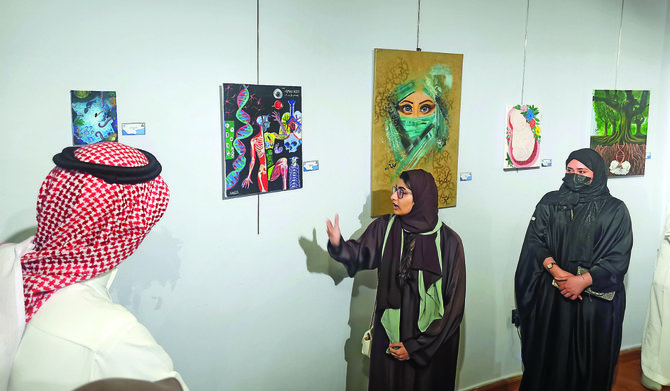
- Exhibition organized by the Saudi Arabian Society for Culture and Arts runs until May 2
JEDDAH: The Saudi Arabian Society for Culture and Arts has launched an exhibition in Jeddah showcasing 25 artworks exploring the link between science and art.
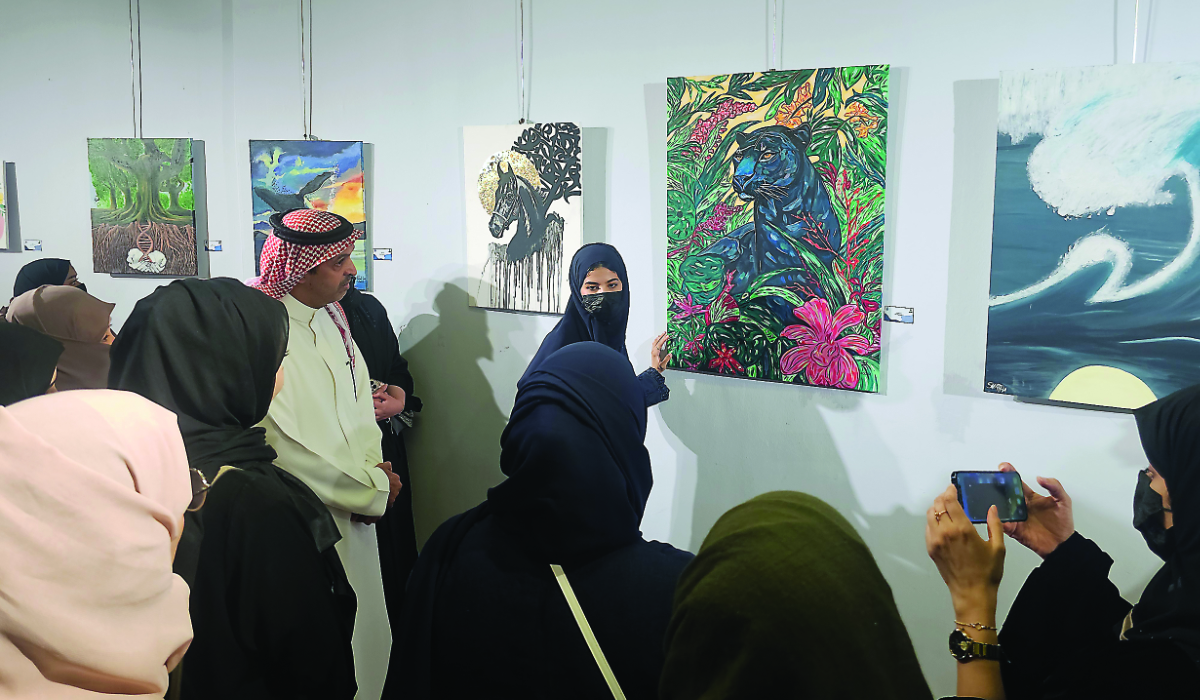
The second annual exhibition organized by the arts society, in collaboration with the Biology Club at King Abdulaziz University, was opened in the presence of Mohammed Al-Subaih, director-general of the organization, Mona Al-Harbi, vice dean of the college of science, local artists, and parents.
HIGHLIGHTS
• The Sci-Art exhibition was organized by the Saudi Arabian Society for Culture and Arts in collaboration with the Biology Club at King Abdulaziz University.
• It is being held to encourage students to showcase their creativity.
The exhibition, which will run until May 2 at the organization’s Abdul Halim Radwi Auditorium, presents an artistic interpretation of scientific inquiry. It is being held to encourage students to showcase their creativity.
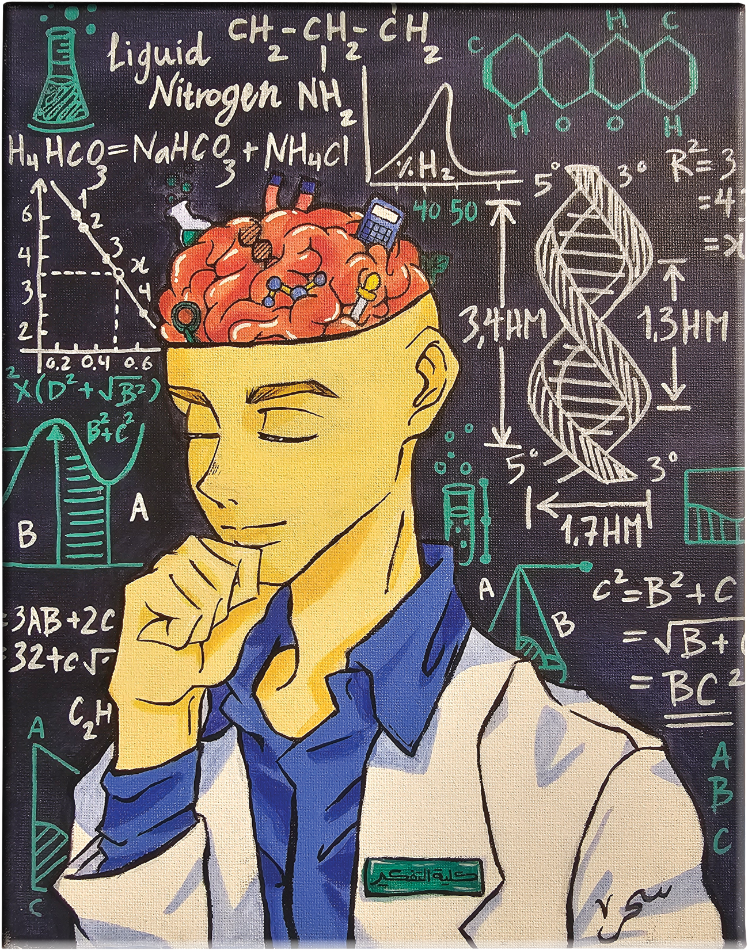
Fifteen female students presented their paintings, sketches and other projects at the opening of the event.
The students chose as subject matter the body’s various systems, the solar system, human mind, natural world, animals, mathematics, computer programming, global warming and more.
The Sci-Art exhibition allows participants to engage their creative and analytical minds to forge new connections between ideas and learn about the world through art.
Mona Al-Harbi, Vice dean of the college of science, King Abdulaziz University
Al-Subaih praised the students for their work. “This exhibition comes as part of our role in spreading culture and arts … we thought of creating a platform for students to exhibit their talents and showcase their innovative ideas and this exhibition is an exciting moment for us to share with our community.”
Al-Harbi added: “The sci-art exhibition allows participants to engage their creative and analytical minds to forge new connections between ideas and learn about the world through art.
“This exhibition is a way to provide a platform for students and others to express that side of themselves and bring art and science together. Our aim is to encourage students to show their artistic talents and create paintings that related to subjects that they have learned in science.”
‘Chicago’ musical to hit the stage in the UAE
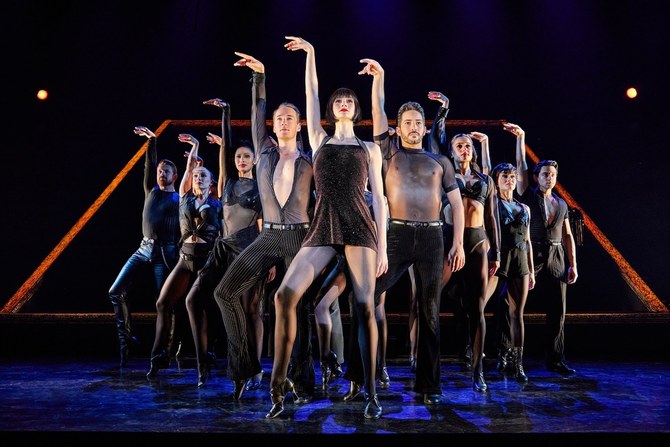
DUBAI: “Chicago,” the American musical with the longest Broadway tenure, is set to be performed in the UAE in September.
The musical will hit the stage at Abu Dhabi’s Etihad Arena for a limited run from Sept.12-22.
“Chicago” is a tale of passion, murder, greed, betrayal and redemption through the journey of two competitive women – an aspiring jazz performer, Roxie Hart, and a former vaudeville star, Velma Kelly.
The production spawned numerous beloved tunes such as “All That Jazz,” “Cell Block Tango” and "Razzle Dazzle.”
Since its premiere on Broadway New York 27 years ago, “Chicago” has played in major cities around the world like London, Sydney, Tokyo, Seoul, Paris, Berlin and Madrid.
Emily Blunt, Ryan Gosling laud stunt performers in ‘The Fall Guy’
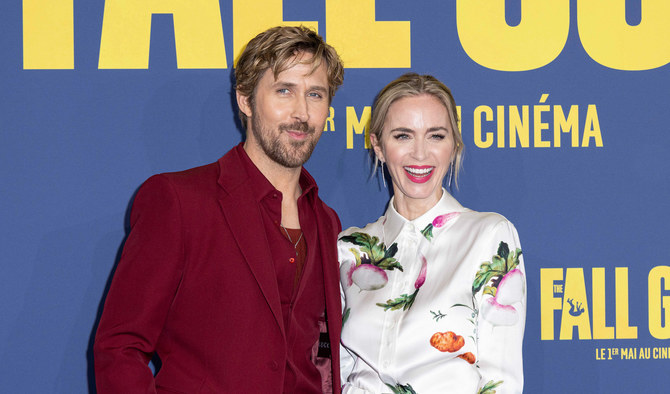
TEXAS: Hollywood stars Emily Blunt and Ryan Gosling pay tribute to stunt actors in a film by director David Leitch, who himself started as a stunt actor. Loosely based on the 1980s TV series about stunt performers, “The Fall Guy,” which releases in Saudi Arabia on Thursday, is billed as blending humor, romance, mystery, and action.
“It's a celebration of our incredible industry and this film is about that, but it's really to just broadcast the incredible and indelible work of stunt performers and what they've done for cinema,” Blunt said in an interview with Arab News.
“What they've done for people's entertainment … they've risked life and limb to give people that crackling sense of wonder that you feel in movies and it's time they got their outing,” she added.
In a challenge to the invasion of digital effects in film, not only is “The Fall Guy’ packed with stunts but it has officially set a Guinness World Record for the most cannon rolls in a car, performed by stunt driver Logan Holladay. Eight-and-a-half rolls broke the previous record of seven, set by Adam Kirley for 2006’s “Casino Royale.”
Gosling praised the film for giving a platform to stunt performer.
“I had a stunt double my whole life. And it's always been this strange dynamic where they come in, they do all the cool stuff, and then they go and hide and you pretend like you did it and it's not cool, it's about time that recognize (their work),” he said.
The film follows the story of Colt Sievers, a stuntman who left his job to focus on his own health. When the star of a big-budget movie directed by his ex-girlfriend goes missing, he is recalled to active duty.
“Ted Lasso” star Hannah Waddingham also stars in the film. The British actress shed light on what the movie means to her.
“You know, we shot it this time last year in Sydney. Starting in late November, October time. So to finally be here, I feel like I've had to keep a lid on it for so long. And my brother and I were obsessed with “The Fall Guy” when I was little, when I was like ten years old so it's so lovely,” she said.
Heba Ismail brings Saudi representation to NFT ecosystem
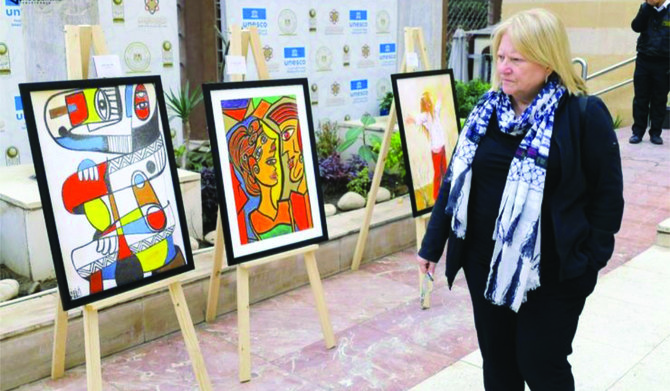
- Heba Ismail is highlighting ways for artists to flourish in the digital world
JEDDAH: Saudi artist Heba Ismail showcased her work at the Outer Edge Innovation Summit in Riyadh this week.
Commenting on her experience at the summit as one of the first Saudi artists to venture into the Web3 art scene, she said: “Having my paintings displayed on the event screens is a tremendous honor, offering global visibility and inspiring more Saudi and Arab artists to explore the diverse options available for sharing their art with the world.
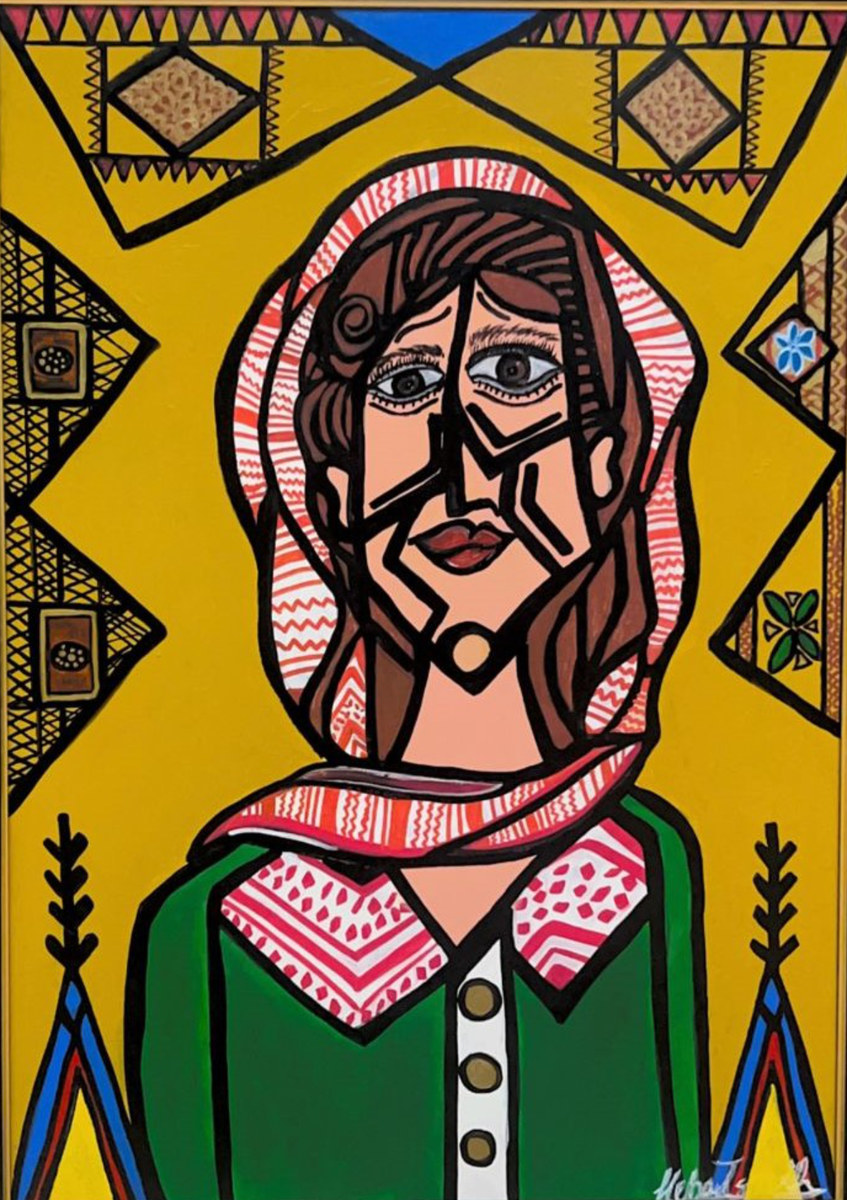
“Through my participation with Nuqtah, the first Saudi NFT platform, I am eager to present my art on a global stage and connect with audiences in innovative ways,” she continued.
Non-fungible tokens — or NFTs — are, in this scenario, digital tokens that can be redeemed for a digital art work. Ismail is exploring their potential in the Saudi art scene.
HIGHLIGHTS
• With a professional background in dentistry, Heba Ismail found parallels between that meticulous work and her own creative process.
• Partnering with ChainVisory, a blockchain consultancy company, Ismail launched the Hebaism brand.
• It combines NFTs and original paintings, providing collectors with both digital and physical assets.
For Ismail, art has always been more than just a hobby — it’s been a lifelong calling. With a professional background in dentistry, Ismail found parallels between that meticulous work and her own creative process.
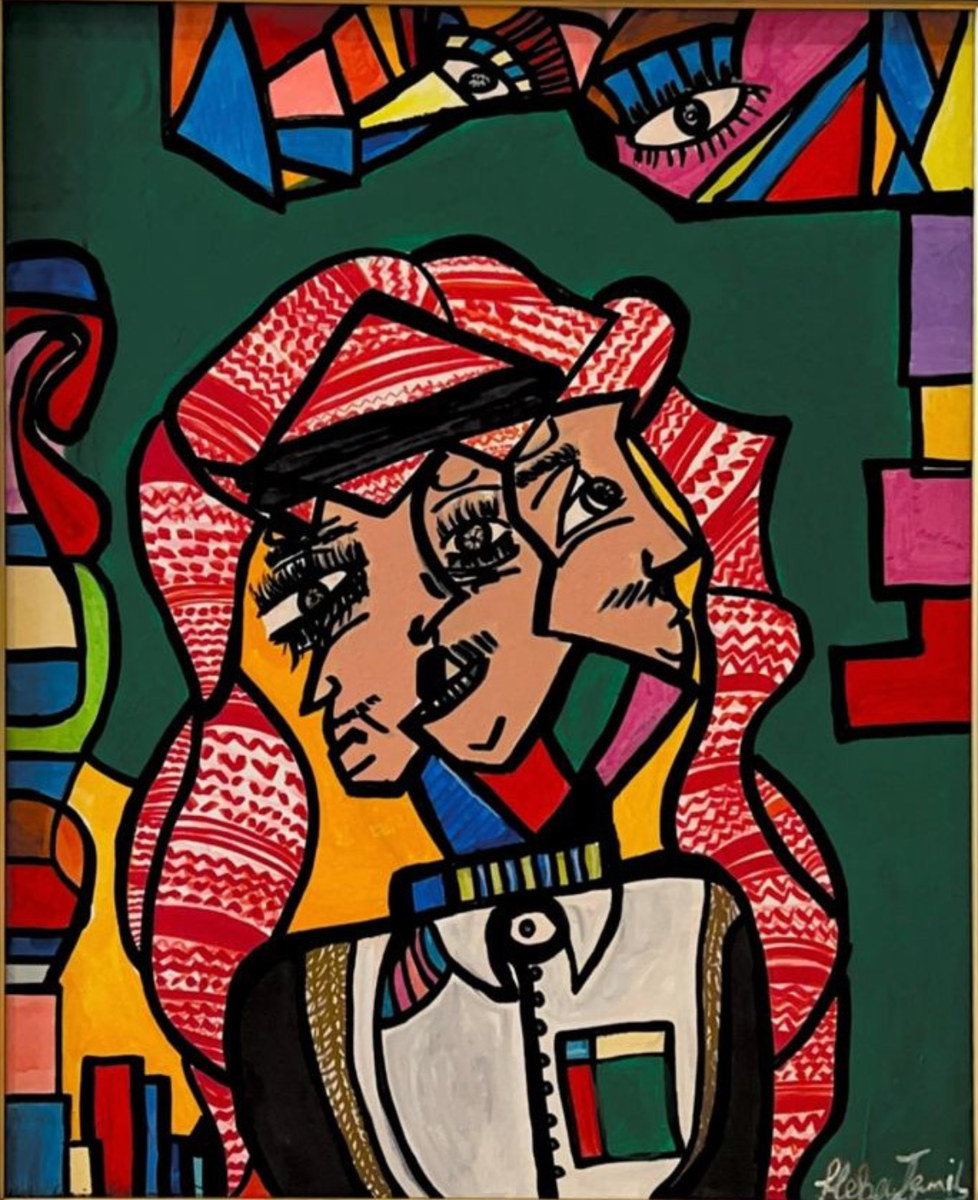
Inspired by movements including cubism, fauvism, and surrealism, Ismail’s art is a fusion of diverse influences and personal narratives “Each face represents a feeling and a vision documented on a painting. I paint poetry, and often times each piece is accompanied by a poem,” she said. “As a Saudi female, most of my paintings represent myself and my Saudi culture, which I am proud of. The characters are coded feelings, faces that tell a story — either joy, sadness, or acrimony.”

Her introduction to NFTs came in 2021, sparking a fascination with the technology and its potential. Partnering with ChainVisory, a blockchain consultancy company, Ismail launched her Hebaism brand, which combines NFTs and original paintings, providing collectors with both digital and physical assets.
As a female Saudi artist, I want to leave a mark and impact on every art platform, putting Saudi art on the map worldwide.
Heba Ismail, Saudi artist
“I wanted to keep the authentic classical painting process, yet the NFT world gave me a chance to meet and discover different ways to share my art and build a name and a brand,” she said. “It’s been an enlightening journey, uncovering the futuristic art process and connecting with a vibrant community through Web3.”
Ismail hopes to inspire other artists in the region to explore new avenues for artistic expression.
“As a female Saudi artist, I want to leave a mark and impact on every art platform, putting Saudi art on the map worldwide,” she said.









